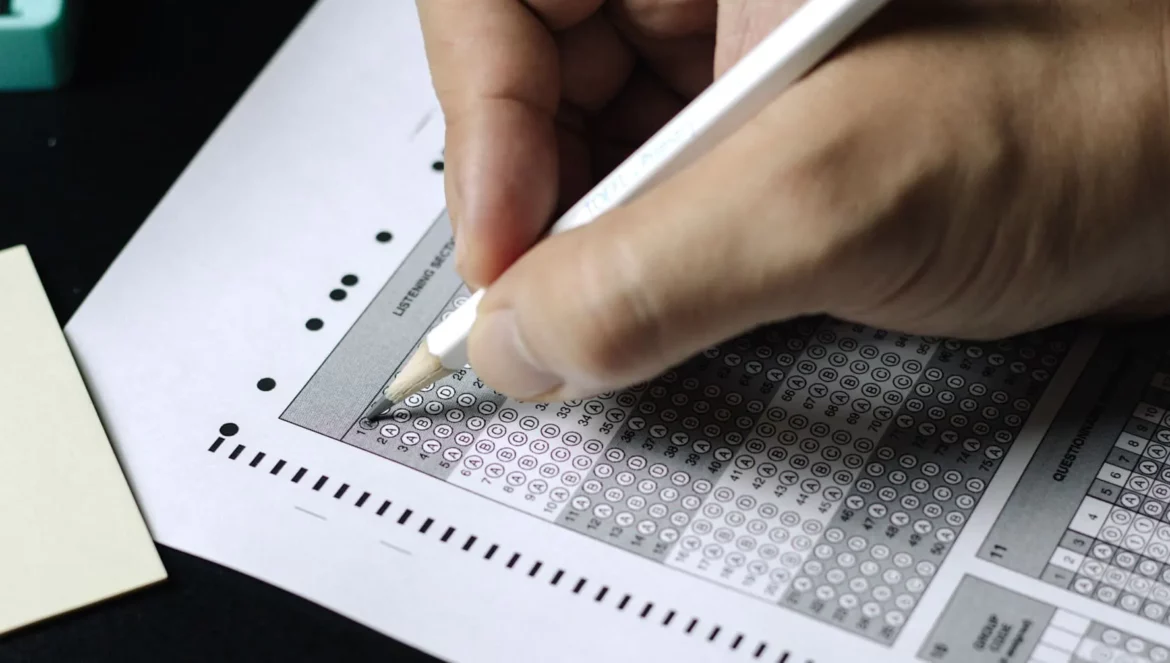Table of Contents
How can we improve student motivation? Over a period of 5 years, from 2000 to 2005, the US slipped from 18th in the world in math to 40th and from 15th to 24th in reading. While many reasons have been proposed for this decline in education, like increasing diversity and rising poverty levels, one factor that has gained increasing attention is standardized testing.
By itself, standardized testing is a useful tool to see how schools perform. However, when standardized testing becomes an accountability tool — where schools, teachers, or students are rewarded or penalized based on test outcomes — tests become high-stakes and carry the potential for damage. Starting with the No Child Left Behind Act in 2002, testing became much more high stakes, which changed classroom teaching patterns.
Reduction of Intrinsic Motivation
The main problem with high-stakes testing is that it incentivizes all players — schools, teachers, and students — in ways that don’t help in deeper learning. Instead of tapping teachers’ and students’ intrinsic motivation, it imposes strong extrinsic motivators on them.
With school funding tied to test scores on limited subjects, time spent teaching other subjects it was declined. A recent analysis of schools and districts found that 70% of school districts reported a focus on reading and mathematics that reduced instructional time for other subjects.
Understanding Student Motivation
The motivation effect extends to students as well. Teachers inadvertently pass on extrinsic motivators in the form of excessive focus on scores or grades to students instead of having more discussions in the classroom. More instruction time is spent on preparing for tests, students have less time to be curious and connect their learning to the real world. Subsequently, students start losing interest in learning itself and no longer find schooling meaningful.
This is especially harmful to student creativity, which relies on a well-rounded education. Creativity comes from having knowledge in several areas and finding connections between domains. When instruction and exploration time in other subjects, like science, social studies, arts, and music, are cut down, the overall creativity of a child reduces, resulting in significantly declined creativity scores over the last few decades.
Strategies to increase motivation and learning outcomes
When high-stakes testing is part of the educational culture, are there some ways to limit the harmful aspects and still achieve good learning outcomes?
In one study conducted at Chicago Public Schools (CPS), researchers tracked low-achieving students from five elementary schools in a high-stakes environment. CPS implemented a policy to end social promotion, holding students back in the current grade if they failed to achieve a minimum score on standardized tests in reading and mathematics. Researchers found a significant difference in outcomes between schools, with the top-performing school having a 4x lower retention rate than the worst-performing school.
The top-performing school employed strategies that better supported students in achieving their goals:
Positive, goal-focused environment
Teachers created a more positive and supportive environment for students, where students felt that the teachers personally cared for their success. Successful instructors brought up the student’s goals, determined ways to achieve them, and praised students’ efforts. These strategies created an environment where students’ social connections motivated them to exert more effort.
As one student expressed, “She says we better try. She plays around saying she doesn’t want to see us again next year, that it’s time for us to leave… usually she’s clowning around but she’s telling the truth…cares about all the children… shows us by teaching us more stuff and giving us examples of the test.“
Shared expectations
Educators in the high-performing school created a sense of responsibility for the whole group. They nurtured an environment where not just the teacher-student relationship mattered but also the peer interactions. When students perceive that their peers are on their side and want them to succeed, their motivation increases.
Support outside of regular school hours
The CPS effort also provided other avenues of support, including after-school programs and summer school. These extra avenues gave students a significant boost in academic support. Most students who increased their effort levels participated in after-school programs or tutoring that extended the in-class instruction. They could get more work done by themselves and do more homework than students who only attended regular school.
These factors helped increase social and intrinsic motivation among students, providing a counterbalance to high-stakes extrinsic motivation. As the researchers note, “Thus, the social context of learning—how teachers, parents, and peers interact with students in relation to the policy—may be the most important factor in determining how students respond to the incentive.“
Conclusion
The standardized testing environment that is now integral to the US educational system will not change overnight. While there are advantages to measuring student performance, tying those results to incentives for schools or teachers creates harmful effects that lower intrinsic motivation and learning outcomes. Despite that, there are strategies schools and educators can use to build a more caring and supportive environment in their classrooms to help students achieve their learning goals.
Further Reading
- edCircuit – Pronita Mehrotra Articles
- Brookings – Standardized tests aren’t the problem; it’s how we use them
- Los Angeles Times – Despite concerns over increasing student stress, standardized testing to go on with some limits






